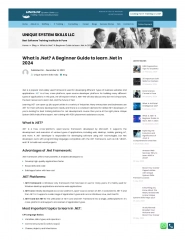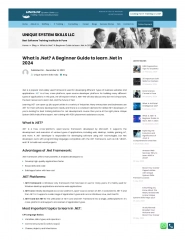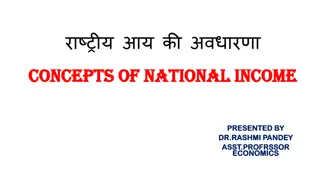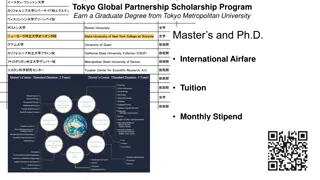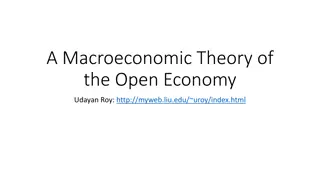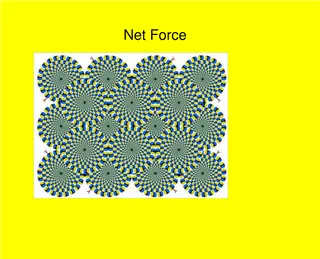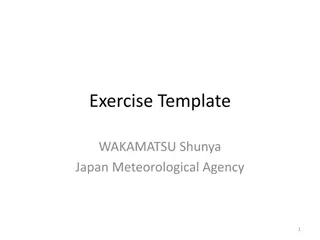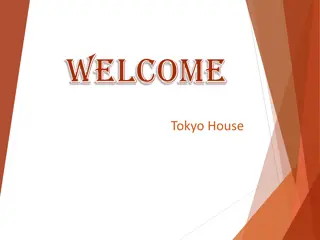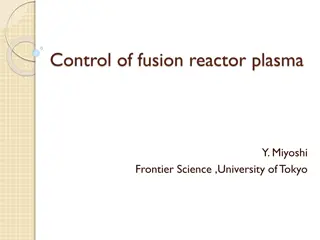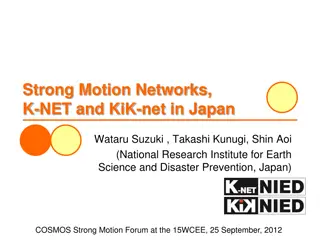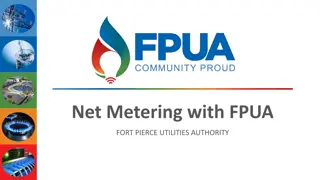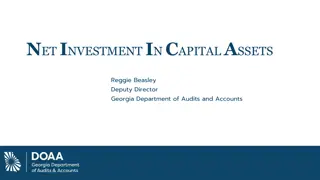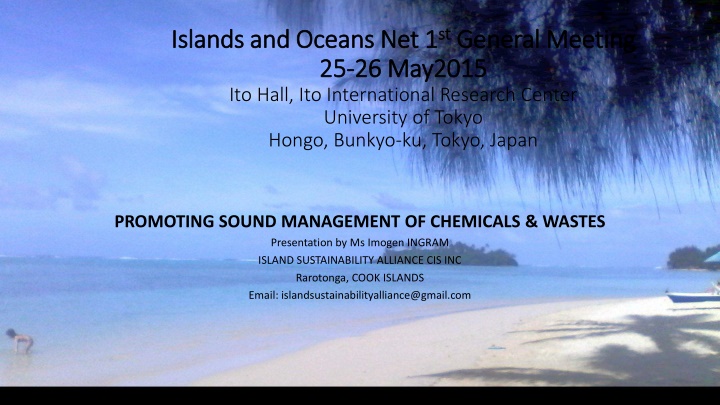
Promoting Sustainable Management of Chemicals and Wastes in Cook Islands
The Cook Islands, located in the South-West Pacific, rely heavily on tourism and exports such as black pearls and noni tonic. With a focus on protecting ecosystems and biodiversity, the Cook Islands have ratified several international agreements related to environmental sustainability and waste management. This includes the Montreal Protocol, Basel Convention, and Stockholm Convention. The island's geographical context, including its 15 islands and self-governing status in association with New Zealand, enhances its commitment to sustainable development.
Uploaded on | 1 Views
Download Presentation

Please find below an Image/Link to download the presentation.
The content on the website is provided AS IS for your information and personal use only. It may not be sold, licensed, or shared on other websites without obtaining consent from the author. If you encounter any issues during the download, it is possible that the publisher has removed the file from their server.
You are allowed to download the files provided on this website for personal or commercial use, subject to the condition that they are used lawfully. All files are the property of their respective owners.
The content on the website is provided AS IS for your information and personal use only. It may not be sold, licensed, or shared on other websites without obtaining consent from the author.
E N D
Presentation Transcript
Islands and Oceans Net 1 Islands and Oceans Net 1st stGeneral Meeting 25 25- -26 May2015 26 May2015 Ito Hall, Ito International Research Center University of Tokyo Hongo, Bunkyo-ku, Tokyo, Japan General Meeting PROMOTING SOUND MANAGEMENT OF CHEMICALS & WASTES Presentation by Ms Imogen INGRAM ISLAND SUSTAINABILITY ALLIANCE CIS INC Rarotonga, COOK ISLANDS Email: islandsustainabilityalliance@gmail.com
Cook Islands Geographical Context The Cook Islands is an archipelago of 15 islands (3 uninhabited) in the South-West Pacific. We are about the same latitude as the Hawaiian Islands, which are on the Tropic of Cancer. If you fly due south of the equator, the Cook Islands are on the Tropic of Capricorn (and just over one hour flying time west of Tahiti). Since 1965, the Cook Islands have self- governing autonomy in free association with New Zealand. This relationship was reaffirmed in 2001. There is a democratically-elected parliamentary system under which governments are elected for a term of up to 4 years.
Cook Islands Brief Background Tourism makes up more than 50% of our GDP. Cultured black pearls and a health tonic made from organic noni are also important revenue-earning exports. So it is important to protect the fragile ecosystems and biodiversity on which our people depend, but also to ensure the viability of our economy. SOME STATISTICS: Area: Population: 14,000 on 12 islands, which extend 1,000 km Density: 75 persons per sq km Capital: Rarotonga Main Town: Avarua Official Languages: Cook Is Maori & English 240 sq km land 1.8 million sq km ocean
INTERNATIONAL LAW IN THE FORM OF INTERNATIONAL LAW IN THE FORM OF LEGALLY LEGALLY- -BINDING MEAs BINDING MEAs The UN term Chemicals & Wastes Cluster refers to the Multilateral Environmental Agreements (or MEAs ) that deal with protection of the environment. The governing body for the environmental MEAs has now changed to the United Nations Environmental Authority or UNEA. The UN Commission on Sustainable Development, based on the Rio Principles which were the outcome of the 1992 Rio Meeting, affirmed that in order to achieve Sustainable Development there are three dimensions of equal importance economic, environmental and social. Many Pacific SIDS have committed to Sustainable Development and have ratified most of the MEAs in the Chemicals & Wastes cluster. In the absence of national legislation, these legally-binding environmental MEAs provide standards.
MULTILATERAL ENVIRONMENTAL MULTILATERAL ENVIRONMENTAL AGREEMENTS RATIFIED BY COOK ISLANDS AGREEMENTS RATIFIED BY COOK ISLANDS In the UN of Chemicals & Wastes cluster of MEAs, Cook Islands has ratified: Montreal Protocol on Ozone-Depleting Substances Basel Convention on Transboundary Transport of Hazardous Wastes & Waigani Convention (Pacific regional convention) on Hazardous Wastes Stockholm Convention on Persistent Organic Pollutants ( POPs ) Rotterdam Convention on Prior Informed Consent Minamata Convention on Mercury (agreed in 2013) will soon come into force, and it is hoped that soon we will ratify it shortly. Signatories to these conventions are obliged to incorporate these legally-binding conventions into national legislation, and then implement activities to eliminate, or at least reduce impacts on human health and the environment.
WHY THE CONCERN FOR PROPER MANAGEMENT WHY THE CONCERN FOR PROPER MANAGEMENT OF CHEMICALS & HAZARDOUS WASTES OF CHEMICALS & HAZARDOUS WASTES? Persistent Organic Pollutants ( POPs ) cause cancer and they are globally dispersed by wind and water to places far from their source ( global deposition ). A global convention was required to achieve global cooperation. Mercury is a heavy metal but its organic form is methylmercury, which has similar characteristics to POPs in the way it disperses. Methylmercury causes permanent, irreversible brain damage in infants. In the Cook Islands National Implementation Plan ( NIP ) under the Stockholm Convention , priorities identified included (but were not limited to) monitoring for POPs contamination in imported foods, imported materials used for making animal feeds, and in fish, especially tuna. In the Pacific Island countries, sources of POPs are typically (1) highly-hazardous pesticides or (2) poor disposal of wastes e.g. electrical & electronic waste ( e-waste). There is little scientific data about the presence of POPs in Pacific ecosystems. We need to document current and past sources of exposure; to assess potential contaminated sites; to remediate such contaminated sites; and to develop policies and strategies for reducing exposure to all hazardous substances During 2005, using NZAID funding, ISACI collected lagoon-water samples to test whether POPs ( persistent organic pollutants ) were present (see next slide). DDT was found in lagoon water, fifty years after it was sprayed in Rarotonga to combat mosquitoes. ISACI worked alongside the Cook Islands Ministry of Marine Resources, which carries out periodic testing of streams and the lagoons for bacterial contaminants.
FINDINGS OF 2005 ISACI PROJECT ON FINDINGS OF 2005 ISACI PROJECT ON MONITORING LAGOON WATER QUALITY MONITORING LAGOON WATER QUALITY In 2005, ISACI was funded by NZAID to carry out sampling of lagoon water for POPs. Concentrations above the detection limit were found for 1 .chlorinated pesticides (DDT & methoxychlor), which are both carcinogenic POPs 2. Polycyclic Aromatic Hydrocarbons (PAHs) which are also carcinogenic; and 3. phthalates Of these analytes, only pthalates (DEHP) was found at ALL sites, indicating wide distribution and possibly a wide range of sources. The unusually high concentration of 40 g/L found at the Avana site in September 2005 may be because of solvents, paints or oils associated with fishing boat activity. Detected concentrations range from 2 40 g/L, many times higher than recommended limits under various national water quality guidelines. DEHP in water will biodegrade (half-life 2-3 wks), adsorb to sediments and bioaccumulate in aquatic organisms.
POSSIBLE SOURCES OF CHEMICALS & WASTES POSSIBLE SOURCES OF CHEMICALS & WASTES CONTAMINATION CONTAMINATION Natural disasters not only create problems over which we have little control, but they can exacerbate man-made problems. When there is extremely heavy rain and/or sea-surges that result in flooding, extra health risks arise from the dispersion of sewage and leachate from poor storage and disposal of hazardous waste e.g.lead batteries, obsolete agricultural chemicals or discarded electronic and electric waste. A new emerging issue is wastes from deepsea mineral mining. Typically chemicals and wastes settle on the sea floor. Experimental technology using remote-controlled devices to extract minerals from the ocean floor raises a plume of these contaminants which will be difficult to control. Returning water to the ocean after separating the minerals will also increase hazards.
LESSONS LEARNED LESSONS LEARNED Compliance with and/or enforcement of environmental legislation and regulations has remained problematic. What we do now is not getting good results. Professor Furukawa yesterday described a participatory model which could work well for compliance with legislation and i.e. establish a team of local experts, develop consensus. Although it takes more time, it would be a more culturally-acceptable model, and a more effective outcome. Some MEAs offer guidances such as the Montreal Protocol procedures for de-gassing refrigeration equipment; or the Stockholm Convention BAT-BEP (Best Available Technique, Best Environmental Practice) guidelines; or the Basel Convention Technical Guidelines on Waste. While they are not legally-binding, they may be adapted to suit by countries with little capacity and may become part of national regulations. We need to develop more coherent national policies. In the past, hurried consultations over 2-3 days have resulted in gaps or inconsistencies in policy. If the National Sustainable Development Plan (NSDP) were revised periodically by sector, our NSDP could include the results after review of sectoral plans such as JNAP for Climate Change; or the UNFCCC Second National Communication and Disaster Risk Management; or the National Implementation Plan and national reports under Stockholm Convention. This is one way to ensure that no inadvertent inconsistencies remained. Economic incentives should be part of the range of policy tools e.g. Palau s green tax per head for tourism; or the Kiribati advance disposal fee to assist with re-export of hazardous waste, including discarded electrical and electronic waste
CHALLENGES CHALLENGES Economic externalities are not fully recognized; and conversely true costs of economic activities are not internalized. For example, the links between high health costs for the impacts of endocrine disrupting chemicals ( EDCs ) by long-term low-dose exposure to pesticides or methylmercury have not been well- researched in the Pacific, but overseas research can be used as a proxy until regional data is established. Swedish research indicates that EDCs may contribute to obesity and non-communicable diseases ( NDCs ), which were given high priority at the Third International SIDS Conference in 2014. In promoting Public-Private Partnerships, we should take note of experiences in the Caribbean where the PPPs often resulted in budget over-runs and less efficient mechanisms. Care must be taken to draft partnership agreements to ensure efficiency and effectiveness. A recent report by the Basel Action Network (an NGO) found evidence of organized criminal networks dealing in e-waste. Consumers delivered their electrical & electronic waste ( E-waste ) to a small collection company and paid a disposal fee for environmentally sound disposal. The small company kept the money, but the waste was illegally shipped to Africa using false documentation. Instead of achieving environmentally-sound disposal, the small company would then disappear with the money, leaving the local communities exposed to health risks, and their local governments with the burden of proper disposal.
Suggested Future Activities under I Suggested Future Activities under I- -O Net O Net PACIFIC SUB-REGIONAL ACTIVITIES: Biomonitoring for endocrine-disrupting chemicals ( EDCs ) and methylmercury in Pacific Islands fish; and hair sampling for methylmercury Monitoring and reducing ocean pollutants in the Pacific, including such sources as Marine Plastics, cruise ship effluent and potential deepsea mining wastes Similar to Montreal Protocol, establish and use international Customs Tariffs for WEE (waste electronic & electrical goods) which is one of the fastest-growing waste streams. Green procurement schemes, where governments, as one of the largest users of electronic & electrical goods, purchase only from companies that operate take-back and/or extended producer responsibility schemes.
Suggested Future Activities under I Suggested Future Activities under I- -O Net O Net COOK ISLANDS NATIONAL ACTIVITY: Review of Cook Islands Solid & Hazardous Waste Strategy, consistent with the SPREP-JICA press release on 1 April 2015 Improving storage, collection & transport for proper disposal of hazardous wastes e.g. electronic & electrical wastes Promoting bokashi bins (see next slide) for conversion of household waste into organic bathroom cleaner and garden fertiliser. Promote organic agriculture for growing and export of niche, high-revenue products e.g. vanilla, dragon fruit.
Suggested Future Activities under I Suggested Future Activities under I- -O Net LOCAL ACTIVITY - RAROTONGA: Monitor Rarotonga wastewater for persistent pharmaceuticals and endocrine-disrupting chemicals ( EDCs ). Promote and implement sustainable tourism strategies that include industry standards and waste reduction in accordance with zero-waste principles O Net
CONCLUSIONS A cohesive overall policy framework is needed for sound management of chemicals and wastes and the protection of human health and natural ecosystems. Scientific research to fill knowledge gaps about chemicals and waste issues in the Pacific SIDS will assist the general public and their governments and policy-makers to make informed choices. Research projects assist with regular awareness-raising for both government sectors and the general public Effective implementation of legislation requires engagement from communities in order to achieve compliance. As Professor Furukawa showed yesterday, community- based participatory governance is key to achieving community ownership of solutions to environmental issues. Early community consultations are needed for discussions and consensus-seeking, to develop policy solutions which are not only culturally- sensitive but also effective in achieving public engagement in seeking solutions. The next step is review of legislation in order to eliminate gaps and to ensure coordination and cooperation among government agencies and ministries including (among others) Agriculture, Customs, Education, Environment, Health, Infrastructure, Tourism.
THANKS TO SPONSORS & ORGANIZERS Thank you for giving us this opportunity to raise our Pacific Island issues, and for the wonderful meeting arrangements that have ensured we feel comfortable and welcome ARIGATO GOZAIMASU







